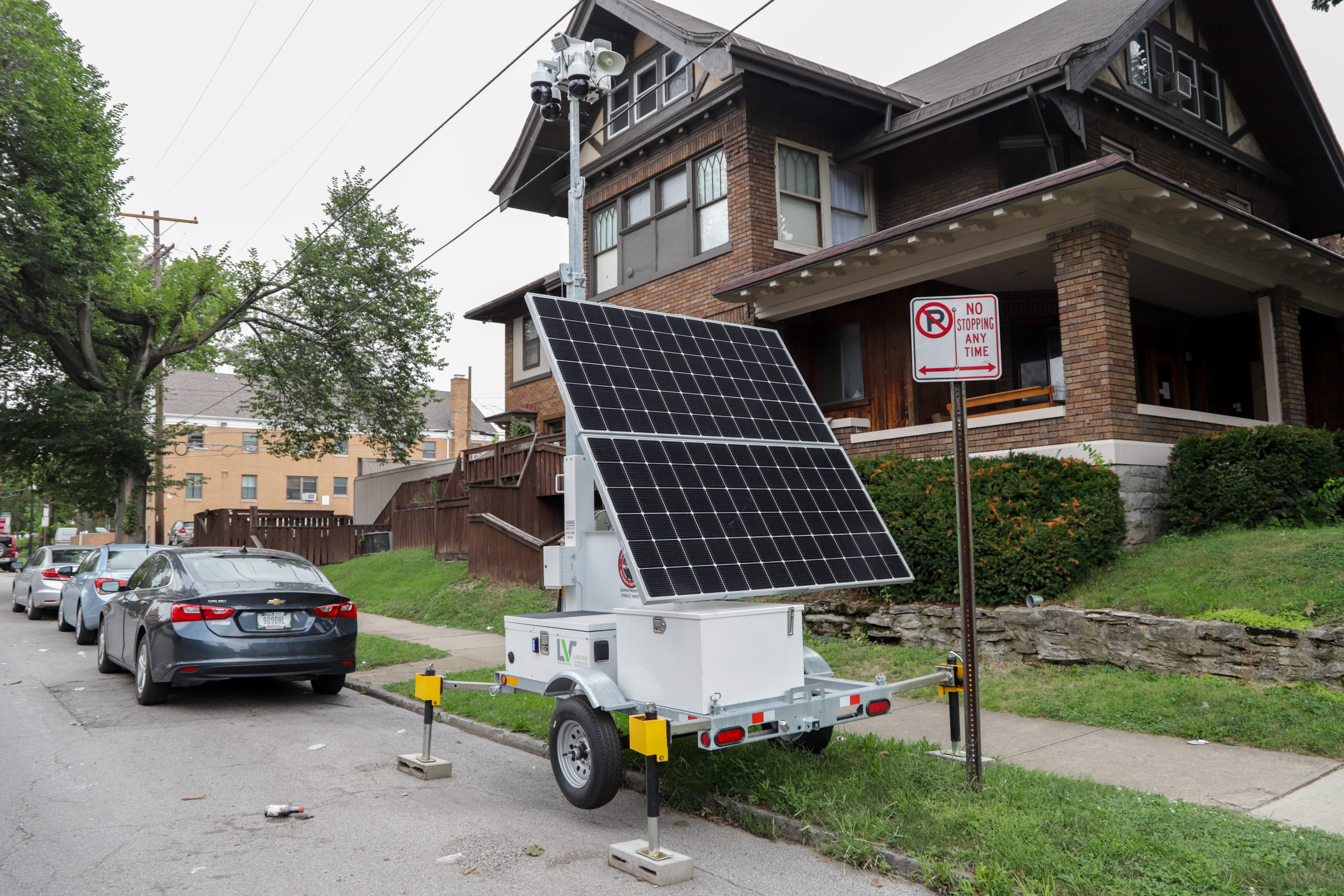
With about 4,000 security cameras on the Ohio State main campus and around the university area, Ohio State possesses a wide array of technology to fight crime. Credit: Mackenzie Shanklin | Lantern File Photo
With the help of security cameras in Scott House, the University Police Division identified and soon after arrested the man who broke into the residence hall.
Matt Wolfzorn, senior systems and operations manager for the Department of Public Safety, said there are about 4,000 security cameras on Ohio State’s Columbus campus and around the university area and 5,000 total across all campuses — including routinely checking high crime rate areas and assisting officers.
“It used to be an analog camera, so that was a camera that was wired back to a main type head end.” Wolfzorn said. “Then we moved on, now, to IP-based technology, so you get a lot higher quality, higher definition cameras and things like that.”
Wolfzorn said not all cameras on campus are stationary.
“There are cameras that have the ability to be remotely controlled and operated by my staff so that they can zoom in on active incidents or do active observations of different incidents,” Wolfzorn said.
According to the 2020-21 Clery report, the university documented reports of:
- Aggravated assault – 11
- Burglary – 44
- Stalking – 68
- Dating violence – 34
- Domestic violence – 14
- Robbery – 8
- Hate crimes – 7
- Arrests for drug law violations – 12
- Disciplinary referrals for alcohol law violations – 23
- Arrests for alcohol law violations – 34
The report counts incidents in the year they were reported, not when they occurred, in accordance with federal law. According to the report, 94 cases of rape and 79 incidences of fondling were reported in 2021.
On top of high-quality video and remote-control cameras, Ohio State and the university area also have 63 license plate reader cameras in their possession — which do more than just record — Wolfzorn said.
“They are not video recording, they are basically snapshot,” Wolfzorn said. “When it sees motion, it pulls a snapshot, but it does have technology that identifies the license plate and when that is identified, we’re able to search by that information.”
Wolfzorn said all on-campus security cameras are one unified system controlled by the Department of Public Safety.
University spokesperson Dan Hedman said due to the 4,000-plus cameras on and off campus, it is impossible to be viewing all at the same time, which is why it is often used to view a previous incident.
“Most of the time, the reason to have a security camera is for after the fact, like after a crime is committed,” Hedman said. “It can deter people from committing crimes because they see it, and they’re like, ‘I don’t want to do something on camera.”’
Wolfzorn said his team includes alarm and video monitoring officers who watch over alarms on campus in order to quickly respond to whatever caused the alarm’s activation.
“It’s my staff that we have on duty 24/7, and they are basically doing exactly what their title says: they monitor alarm functions for campus,” Wolfzorn said. “We monitor a number of different security alarms across campus, so duress buttons, motion alarms, all those kinds of things.”
In addition to monitoring alarm systems, the monitoring team oversees live footage when an officer is responding to an incident to back up whoever is on scene, Wolfzorn said.
“Say an officer catches somebody that’s speeding, they will pull up that camera to watch them interacting with the person that was in the vehicle to make sure that they’re safe and that the situation is OK,” Wolfzorn said.
Wolfzorn was not able to provide a number for the total cost of the cameras on campus. However, he said they are mostly added through “capital projects.”
“As projects happen, it is part of the design of any construction [to add cameras],” Wolfzorn said.
Hedman said the university’s public safety has a budget of $35 million a year and covers expenses — including “police officers, security officers, equipment, technology.”
“For a lot of the cameras, there’s ongoing maintenance costs, storage costs and things like that. A lot of that is, like, upfront cost — one time cost when you’re installing a camera,” Hedman said.


